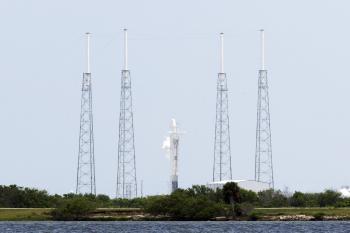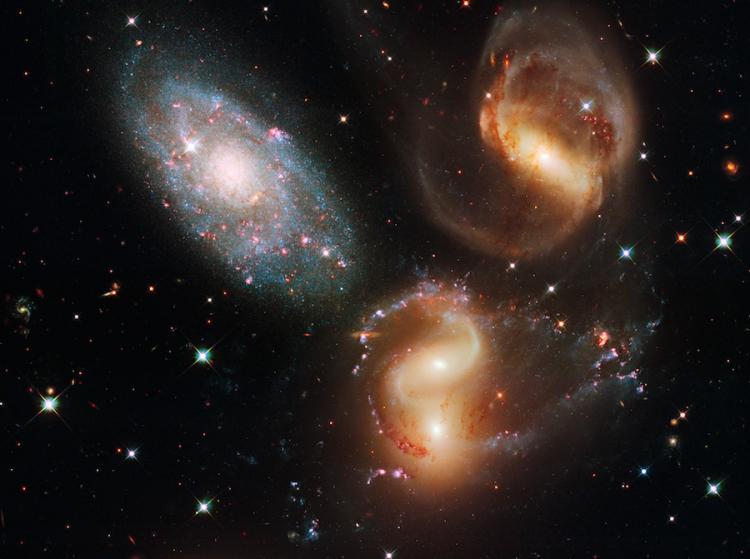Astronomy buffs will have more to explore, and even contribute, as space camera Slooh teams up with Google. The collaborative effort will add a new layer to Google Sky with a live astronomy feature.
Like Google Earth, which allows Internet users to explore any location on the planet in increasingly greater detail, Google Sky explores space. Since 2007, Google Sky has incorporated images from the Hubble telescope, NASA, and the Sloan Digital Sky Survey. With the help of Slooh, Google Sky can now allow users to explore the galaxy in real time. Users can even participate in helping map the universe.
Slooh is an online space camera that streams live views of space through a worldwide network of mountaintop robotic telescopes stationed in the Canary Islands, Chile, and Australia. It utilizes a unique, instant imaging technology that makes celestial objects appear like Polaroid images over the course of 5-minute sessions.
New Slooh space camera pictures will combine with the more than 35,000 celestial objects taken by Slooh members that have already been integrated into Google Earth to give the feature an increasingly richer experience.
While the “map of the universe” application is available to anyone with an Internet connection, Slooh gives members, regardless of skill level, the ability to control the telescopes and join featured missions to various parts of the galaxy. Members can also capture instant digital photos, label them, and automatically upload them to Google Earth to share with the world.
Individuals of any age can contribute to the project. Slooh is promoting Space Launch cards for the 8 and older set that initiate live online missions to outer space. Each pack of cards come with launch codes specific to a particular category of celestial objects and the opportunity to photograph them with Slooh’s Space Camera. After entering the launch code, card users take control of the telescope and join 5-minute missions into space accompanied by audio commentary.
In addition to space photos, Google will also feature broadcasts of Slooh’s live feed of celestial events such as lunar eclipses, comets, and supernova discoveries. Nationally renowned astronomer Bob Berman will provide commentary for much of the Slooh coverage.
“Slooh’s ‘map the universe’ layer brings a powerful educational component to Google Earth,” said Noel Gorelick, Technical Lead, Sky in Google Earth in a statement for the collaboration. “Not only does the ability to explore space live bring a totally new active dimension to the experience, but also gives Google users a deeper awareness of the positions of a myriad of celestial objects and the birth of galaxies in our solar system.
Slooh has already provided live coverage of several important celestial events, including the October 2009 coverage of NASA’s LCROSS crash of space ship to the moon and a recent supernova discovery. With a greater number of eyes on they sky from Google’s global community contributing to the project, the team hopes to capture even more celestial phenomena.
Like Google Earth, which allows Internet users to explore any location on the planet in increasingly greater detail, Google Sky explores space. Since 2007, Google Sky has incorporated images from the Hubble telescope, NASA, and the Sloan Digital Sky Survey. With the help of Slooh, Google Sky can now allow users to explore the galaxy in real time. Users can even participate in helping map the universe.
Slooh is an online space camera that streams live views of space through a worldwide network of mountaintop robotic telescopes stationed in the Canary Islands, Chile, and Australia. It utilizes a unique, instant imaging technology that makes celestial objects appear like Polaroid images over the course of 5-minute sessions.
New Slooh space camera pictures will combine with the more than 35,000 celestial objects taken by Slooh members that have already been integrated into Google Earth to give the feature an increasingly richer experience.
While the “map of the universe” application is available to anyone with an Internet connection, Slooh gives members, regardless of skill level, the ability to control the telescopes and join featured missions to various parts of the galaxy. Members can also capture instant digital photos, label them, and automatically upload them to Google Earth to share with the world.
Individuals of any age can contribute to the project. Slooh is promoting Space Launch cards for the 8 and older set that initiate live online missions to outer space. Each pack of cards come with launch codes specific to a particular category of celestial objects and the opportunity to photograph them with Slooh’s Space Camera. After entering the launch code, card users take control of the telescope and join 5-minute missions into space accompanied by audio commentary.
In addition to space photos, Google will also feature broadcasts of Slooh’s live feed of celestial events such as lunar eclipses, comets, and supernova discoveries. Nationally renowned astronomer Bob Berman will provide commentary for much of the Slooh coverage.
“Slooh’s ‘map the universe’ layer brings a powerful educational component to Google Earth,” said Noel Gorelick, Technical Lead, Sky in Google Earth in a statement for the collaboration. “Not only does the ability to explore space live bring a totally new active dimension to the experience, but also gives Google users a deeper awareness of the positions of a myriad of celestial objects and the birth of galaxies in our solar system.
Slooh has already provided live coverage of several important celestial events, including the October 2009 coverage of NASA’s LCROSS crash of space ship to the moon and a recent supernova discovery. With a greater number of eyes on they sky from Google’s global community contributing to the project, the team hopes to capture even more celestial phenomena.








Friends Read Free